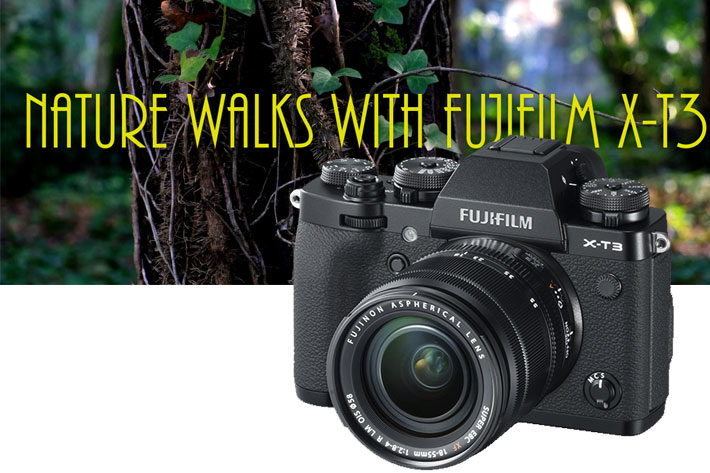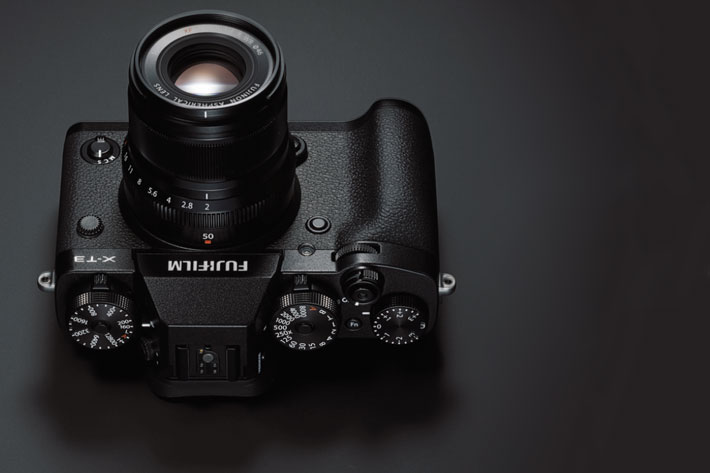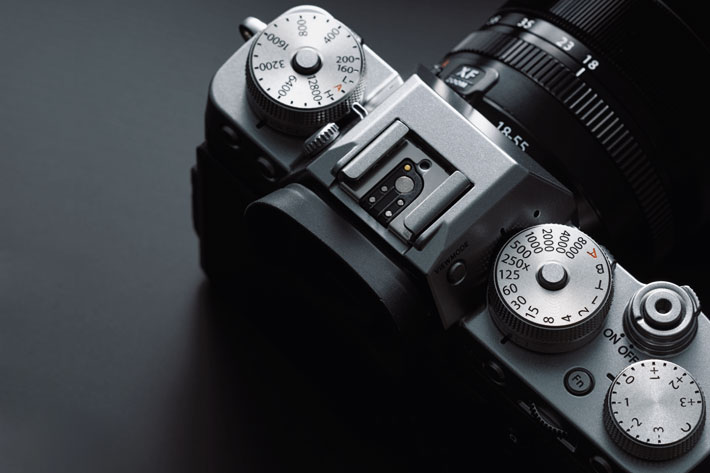
From the color science to the controls layout, the Fujifilm X-T3 is a great camera that should be high in your list of desired models, if you’re looking for a camera for your future adventures.
The reviews of the Fujifilm X-T3 are all around, some published minutes after the camera was announced, something that might explain why statements like “the camera does not have a touch screen” collide with what the manual says. I know that having high numbers on websites contributes to the speed at which reviews are made. Anyways, there are many reviews, some a good read, others not so much. You can pick the ones you prefer.
This is not a review of the X-T3, more some field notes, while I explore the camera, which Fujifilm Portugal sent me to try, with a 18-55mm lens and, at my request, a couple of batteries, so I can have fun without having to think if the battery will fail me. Because learning a camera takes some time, and this one, even if I am somehow familiar with the Fujifilm ethos, requires some extra time to real reveal itself.

The Fujifilm X-T3 is like the cockpit of an airplane
These notes may be helpful if you’re buying your first camera and want to know if the Fujifilm X-T3 is the right choice. Or to someone who envisages changing system and is attracted by good reviews of this model. Reviews will tell you more about lab data and comparisons, my notes are centered on the features that attracted me most, as both a photographer and videographer. Being a Canon user, I own a few Fujifilm cameras, from the early FinePix MX digital models, to the emulsion medium-format GS645, and I’ve tried some more recent models, like the Fujifilm X-T10. Fujifilm cameras have grown in complexity, due to the amount of features offered, and the X-T3 is a good example of the continued evolution of the company’s cameras, as Fujifilm continues to search, as I wrote, for film’s soul in a digital world.
The experience of the XT3 is akin to sitting in the cockpit of an airplane for the first time. All those dials and screens (in the electronic viewfinder or EVF and LCD) combine to give you a sensation of past and future converging right in front of your eyes. The mix of classic dials that old photographers and videographers know well with screens packed with information work well, but will have you surprised, first, and reaching for the manual second.

Dials and buttons, all working together
If the Fujifilm X-T3 was an airplane, it would be a mix of the dials and gauges of an old North American F-86A Sabre with the modern glass cockpit of a Lockheed Martin F-22A. What this means is that if you are born in modern times, and used to the push button sequences from many modern cameras, you’ll have to learn a few tricks to get to grips with the Fujifilm X-T3.
If, like me, your first cameras only had dials, then you’ll feel at home using the X-T3. Still, there is a relearning curve for me, as the Fujifilm X-T3 has dials for everything from setting the ISO to shutter speed, or exposure compensation. They mix rather well with the “glass cockpit” side of the camera, that opens to so many options you sometimes wonder how Fujifilm managed to put so many things inside what is a compact APS-C model.
A real aperture control ring
The presence of an aperture control ring on the lenses – which is an alternative to the dial doing the exact same thing -, is another look at the past that I appreciated. Yes, I am used and like the ways my modern Canons behave (and so does the X-T3), but I have no problems with an old school way of doing things that feels natural, and here I can opt. My older Canons, as many other cameras, also had aperture control on the lens. Between old school and modern style ways of doing things, the Fujifilm X-T3 may reveal itself, as I wrote above, like trying, for the first time, to understand the cockpit of an airplane.
It is true that if you know your way around cameras, you’ll be able to figure some of the basics of using the X-T3. But, believe me, you’ll only be touching the surface, because there is so much more to learn and discover, that it is mandatory to read the manual to get a grasp of what the camera does. As Fujifilm states on the first pages of the manual, “This manual contains instructions for your Fujifilm X-T3 digital camera. Be sure you have read and understood its contents before proceeding.”
Do yourself a favor: Read the Manual
I’ve spent two days reading through the manual and playing with the camera, in preparation to really use it to take images, both stills and animated ones. It’s not just to learn the multiplicity of functions, it’s also to understand Fujifilm’s philosophy embedded in the camera, the reasons that make the company opt for particular options that you may not find in models from other companies. We all know what B stands for, but Bulb on the Fujifilm X-T3 works differently from, for example, my Canons. I would not say it is better, it’s just different, and, I dare say, more comfortable to use.
With B (Bulb) selected on the X-T3 you can, as with any other camera, make long time-exposures, as you’re in complete control, opening and closing the shutter manually. The shutter will remain open for up to 60 minutes while the shutter button is pressed, and the display shows the time elapsed since the exposure started.What makes this B different is that once you’ve set the Aperture to Auto (moving the slider on the lens barrel), the exposure time for Bulb is set at 30 seconds.
The magic of “T” in the Fujifilm X-T3
What’s the interest of this?, you may have asked by now. Well, usually cameras have a 30 seconds limit for long exposures, which is deemed enough for many situations. On my older Canons (the new one’s already have a B option on the dial) I’ve, in normal conditions, to turn the dial all the way from the shutter speed the camera is at, to the 30 seconds I want. On the Fujifilm X-T3 the process of turning the speed dial to B is faster, because the dial goes directly from 1 second, through T, to B.
Slide the Aperture on the barrel and you’ve the camera measuring available light for a Bulb exposure of 30 seconds ((unless your right dial is in C, for the Command mode, which is a different story altogether). On many cameras, and my older Canons I will still be turning the dial, to go through all the values. If I was at 1/60, it’s a long path, which also depends on how you’ve your camera set (1/2 or 1/3 stop): mine goes through 1/50, 1/40, 1/30, 1/25, 1/20, 1/15, 1/13, 1/10, 1/8, 1/6, 1/5, ¼, 0”3, 0”4, 0”5, 0”6, 0”8, 1”, 1”3, 1”6, 2”, 2”5, 3”2, 4”, 5”, 6”, 8”, 10”, 13”, 15”, 20”, 25”, 30”.
https://www.youtube.com/watch?v=gTLADQLkHIc
I wrote the complete series of shutter speeds on purpose, so you get an idea of how, sometimes, what looks like a good user interface makes you take a longer path, when there is a shortcut: the Fujifilm XT-3 has it. Now, if you’re wondering where are all the other values, let me say that you’ll find them under “T”, a letter that Canon users are not very familiar with but which Nikon users will know too. The “T” inscribed on the shutter speed dial of the X-T3 stands for Time. Selecting it allows the user to choose a series of shutter speeds in a wide range that goes as far as… 15 minutes exposure.
A viewfinder that adapts to your eyesight
Does this mean that the Canons and other cameras are less capable of long exposures? No, not at all. Owners of modern Canon cameras can use the Bulb timer function to define their exposures, all the way up to 99 hours, 59 minutes and 59 seconds, which is a lot! This just serves to demonstrate that despite the differences you might find between cameras, they usually allow you to do the same essential task: create images. Knowing the camera well helps to achieve that goal, and that can only be achieved taking the time to discover what each particular camera does, through playing with it and… RTFM.
The X-T3 is a treasure trove of customization options, from the ways you can associate different buttons with functions to the ways the screens show the information for you. Options as the Large Indicators Mode, which lets you choose the size of the info on the EVF suggest that users who have difficulty seeing the little letters on the screen can have them enlarged without sacrificing the framing of the subjects. While some icons may not appear then (only on the LCD), the essentiaI info is present. Moreover, you can define what is shown on the EVF screen. It does not stop there, though, because you can also do the same for the LCD!
This camera is a joy to use!
These options make using the X-T3 feel like going back to the cameras of the past, with just the basics, what can be a refreshing experience once you’ve defined how you want to shoot. I believe those little things are what contributes to make the X-T3 a joy to use. And did I mention that you can not only define which way the focus ring rotates, but also define if the aperture f/-number becomes a T-number when you use Fujinon’s MKX cinema lenses. As I said, those little things matter. This last one reveals how much Fujifilm wants the X-T3 to be considered a proper cinema tool.
Having so many ways to configure the camera can seem daunting, but a camera is like a bike. Once you get to know it, and use it regularly, control becomes easier. It took me a while, for example, to configure the X-T3 so I can control the shutter speed with the front dial and the aperture with the rear dial – reading the manual was the only way to get it working – but once I had it set as I wanted, I could move on to what was important: to take pictures. Optionally, with Auto ISO, just by moving the respective dial from a set value to A. Great!
The adventure of configuring Manual mode
In the process of setting the manual mode as I wanted, I discovered that a simple switch of the Auto aperture slider on the lens would allow me to move the control of the aperture between the lens and the rear dial. Once you know that pressing the front dial will allow you to configure the options for both dials, a whole series of options is available. For example, if I want to use the rear dial for shutter speed and the aperture ring on the lens, I can. Or set it to the front dial. So many options, meaning users can configure the camera the way they prefer.
Used for taking pictures, the camera works like any other camera. We’ve reached a point in terms of technology – and Fujifilm is at the forefront – that we know what to expect, and final opinions are very much based on personal taste and ergonomics, which is something important but different from the picture taking act. The technical aspects are, we could say, very similar, and one element that may be different is the way colour is perceived by the sensor. Fujifilm excels, as far as I know, in that department, with the base options and all the other features present, about some of which I’ve written here at ProVideo Coalition before.
Learning a camera is like getting to know a friend
As I said, it takes time to get used to a different camera, but if that’s a decision you’ve made, the Fujifilm X-T3 will become familiar to you, with time, and the more you use it. That’s exactly how I felt, and I only had the camera for a while, certainly not enough to get to fully explore each of the so many features present. As a picture taking machine, it served me rather well, and my only limitations were the lack of the lenses I would love to be able to use it with, and the fact that me not fully knowing the camera made for some hesitations that led me to not grab some candid shots as I intended. If this was my camera, used regularly, I would learn to be one with it!
For video, the X-T3 served me well too, again only limited by time and the unique lens I received to play with it. The interface worked fast enough for my needs, and changing modes was easy to understand after I read the manual with the camera on my hand. The multiple options available have all been mentioned elsewhere, and I’ve also made reference to them in a previous article.
Creating videos of the things I like
The results presented here, which barely touch the surface of what’s possible, reflect the things I love to capture. My only limitation was the lens, the XF 18-55mm f/2.8-4 R LM OIS, but still, its close-up features allowed me to create some, in my opinion, interesting sequences. I loved the fact that the battery, once it entered into the red, worked for quite a bit of time before I had to replace it, which for video is a good thing. I never felt that I was let down by a battery suddenly dying, and I could time my captures so as not to miss important moments.
One aspect that surprised me was the sound registered by the two microphones in the body. While they will capture all the noise around – that’s the reason why I did not use the raw sound in most of the sequences – when the ambient sound dominates, like on the flowing water in the last segment of the video, the tiny microphones do a respectable job, as long as you don’t need to touch the camera and change values during capture.
A note about editing
Photos published here were edited in Affinity Photo just like any other photo, and they essentially reflect the colour the Fujifilm X-T3 gives. I used Velvia film in the past (and Ektahcrome Panther and G) so I like strong colors. I wish I had a long lens to play more with the Fujifilm X-T3, as the 18-55mm is not ideal for the things I like, as I usually photograph flowers with the longer side of a 100-400mm zoom. But the lens was OK for video, and that was something I wanted to try with the Fujifilm X-T3.
With the option to use 4K60 internal with 10-bit 4:2:0 was something I did not want to miss so I went for 4K to create the video published here, which reflects the subjects I like to cover. The video was edited with PowerDirector 17 from CyberLink, the newest version of the NLE, launched recently. That’s something I want to write about another day.
A final note. I wanted to finish this hands-on review – or whatever you want to call it – article before Christmas, so as to give you an idea of the potential of the Fujifilm X-T3 as your next camera. If you’re looking for the option for your first serious camera or simply want to move to something else, check the Fujifilm X-T3. It may look daunting with so many dials and buttons, but it’s a great tool for both photographs and video.

